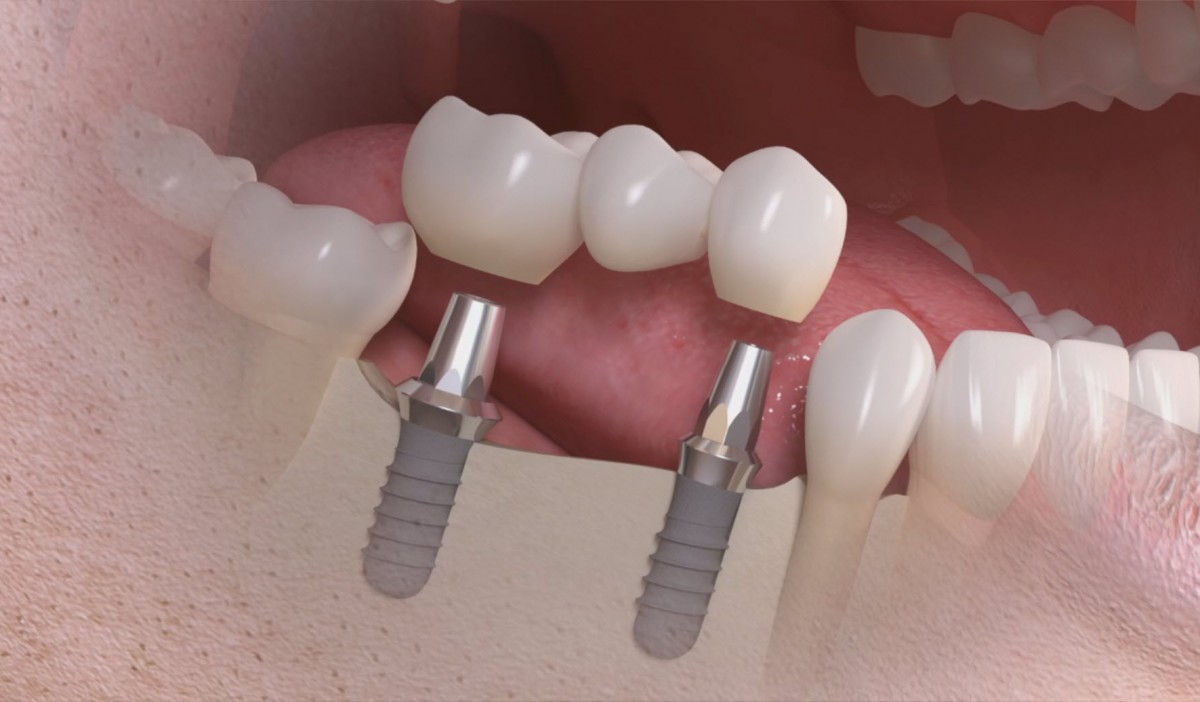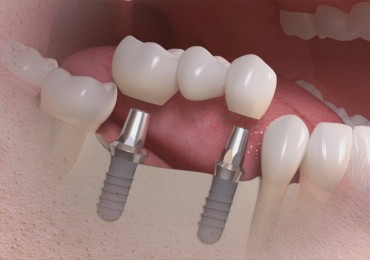Treatment methods related to implant applications and diagnosis

About Treatment
Implants are artificial tooth roots that are placed in the jawbone to restore their function and aesthetics, rather than the teeth lost for various reasons.
The loss of teeth, a part of facial aesthetics, leads to psychological and social problems as well as feeding, digestive problems and speech disorders. Dental deficiencies can be accomplished with implant assisted prostheses as well as with conventional methods such as bridge prostheses attached to natural teeth or removable removable prostheses.
Implants made
One or more tooth deficiencies:
Treatment of single tooth defects with implants is a more conservative treatment than restoration with a bridge. In order to make a bridge prosthesis, healthy teeth will need to be reduced and covered, and replacing this bridge in particular will bring a load economically. Thanks to the implants that are placed in missing tooth or tooth space, treatment can be done without any treatment on the adjacent teeth.
Full Gearless:
Implant assisted prostheses restore comfort to the patient, if no moving prosthesis can be used due to nausea reflexes and prosthetic restraint not being sufficient in the absence of teeth in the mouth.
Inspection and planning:
The implant is performed in a multidisciplinary approach. The implant specialist will work with the surgical specialist to implant the implant into the bone of the jaw and prosthesis specialists who will perform implant prosthesis.
The implant can be applied to anyone other than those with some systemic disease, such as diabetes, which can not be controlled at advanced levels. Because the implants are made from titanium and mimic the natural tooth root, they can be tissue compatible or cause no allergic or toxic illness.
In the examination phase, a detailed intraoral examination examines the conditions such as gingiva, lower and upper fetus and the relationship of teeth to each other. In addition to classical radiographs, three dimensional tomography is taken in complicated cases to obtain the same size model of the fetus in a special device, . The planning and the treatments to be done after this planning are discussed in detail with the patients.
Implant placement:
The right planning for a good treatment is without doubt the very beginning. It is of course very important that the operation to be performed in the aftermath is carried out in an environment where an expert, experienced team has adequate equipment and all sterilization conditions. Implants are administered by local anesthesia as are other dental treatments. However, in some cases it is not enough for the jawbone and graft tissue removal is necessary in some cases, in long operations or in patients with severe stress, under general anesthesia sedation, operation is performed comfortably.
Making prostheses:
After surgery, a period of time is required for the attachment of the so-called oschrointegration to the bone surface. This time depends on the structure of the bone. After this period is over, the superstructure is built. After operation, temporary prostheses are made to continue the aesthetic and functioning until the prosthesis is made.

 Türkçe
Türkçe English
English Deutsch
Deutsch Norsk
Norsk русский
русский
